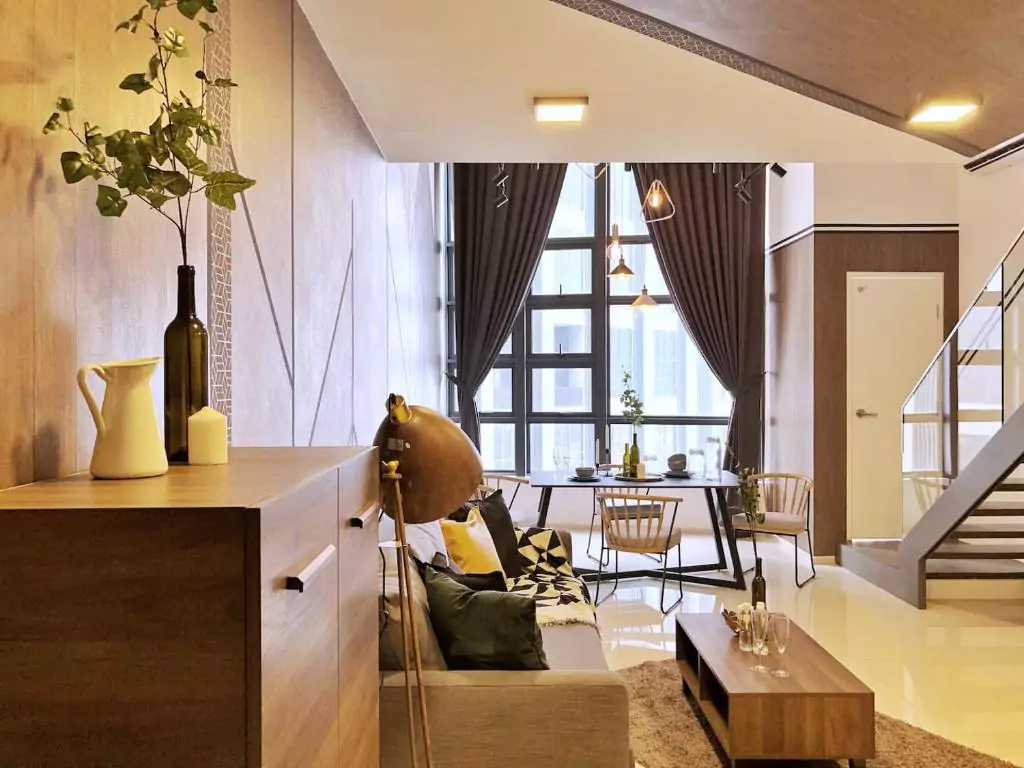Check out our in-depth guide for purchasing houses on the secondary market. Learn about important factors.
1. Flexibility
Because SOHO units are typically smaller (400 to 800 square feet) than condo units, you could feel cramped and have certain restrictions on how well they can serve as a home. However, they come equipped with all the essentials of a house, such as a living room, bedrooms, fully furnished bathrooms, and amenities typically found with condos.
SoHo spaces offer versatility in terms of utilization and layout. Whether it’s a home office setting or a tiny office space for a few employees, they can be adapted to match the individual demands of the individuals. This adaptability enables effective use of the space that is available.
2. Convenience
For individuals who want the convenience of having a dedicated workspace without the requirement for a separate office site, SOHO is typically found in popular locations. The fact that it is simple to find the closest LRT or MRT station shows that it was either built next to a mall or close to the city’s center.
Similar with condos, the majority of developers frequently continue to offer a variety of facilities and amenities for the benefit of the people, such as swimming pools, fitness centers, parking spaces, security services, and common areas. Quality of life is improved by these amenities, which also make it simpler and more comfortable for the residents to live and work there.
3. The Housing Development Act (HDA)
Despite having the name, SOHOs are protected by the Housing Development Act (HDA) since they have a standard Sale and Purchase Agreement (SPA), unlike “Small office, Virtual office” (SOVO) and “Small office, Flexible office” (SOFO). Having HDA protection promotes openness and responsibility on the part of both parties and safeguards the interests of buyers. In addition, HDA will serve as the mediator in case there are any further disagreements, claims, or problems between the buyer and the developer.
4. Loan-To-Value Ratio (LTV)
As long as it is your first or second property, the likelihood of achieving a 90% LTV is great because SOHOs are covered under HDA.
LTV for commercial titled properties would normally range between 70% and 85% because of the absence of HAD protection. Naturally, you’d like to get a greater LTV when investing in real estate to lower the initial capital required for a down payment.
5. Cost-Effective
Those with the freedom to work from home and who are self-employed, own their own firm, or are engaged in the gig economy are aware of how cost-effective telecommuting can be for running their business without compromising productivity.
This also means that an increasing number of individuals are using their own houses as offices due to flexible work schedules and remote work options. Additionally, staying put at work removes the need for a daily trip to and from work, which saves time and money.
6. Commercial title
A SOHO is classified as commercial property because it largely consists of a workplace space that also serves as homes. Utility costs, business levies, and quit rent are all greater with a commercial title than they are with a residential one.
You will need to provide evidence that your unit is used for resident basis even if the water and electric utility bills may occasionally be switched from commercial to residential rates.
In conclusion, SoHo spaces may be lack space and a polished appearance but they offer modest figure, flexibility, and convenience. In the end, the decision between SoHo and a condo comes down to personal tastes, budgetary factors, and particular business or lifestyle requirements.



